UNESCO, which has established six heritage sites in the country as national treasures, recognises Sri Lanka’s culture depth: If you’re interested in exploring ancient ruins, Sri Lanka’s Cultural Triangle is the place to be! You’ll find huge dome-shaped structures called dagobas, as well as the remains of old buildings in the ruined cities of Anuradhapura and Polonnaruwa. The temple at Dambulla has an amazing stairway, and the palace at the rock of Sigiriya has beautiful frescoes of heavenly maidens that are sure to catch your eye. Visitors can experience these World Heritage Sites within a compact area called the Cultural Triangle.
In the hill country lies the former royal capital of Kandy, The Sacred Temple of the Tooth is there, which is a really important place for Buddhists because it has a tooth relic of the Buddha. Kandy is known for its cool architecture, art, and music, and it’s a great place to experience traditional culture.
If you’re interested in Sri Lanka’s colonial history, you should definitely check out the Dutch fort in Galle. It was built way back in the mid-17th century and is actually the best-preserved fort in all of Asia! The fort has 14 huge bastions, a cool grid street system, and even some original Dutch bungalows. When you visit, you’ll feel like you’re stepping back in time to when Galle was the biggest port in the whole country. It’s one of the most interesting and unique things you’ll see in Sri Lanka.
Ancient City of Polonnaruwa
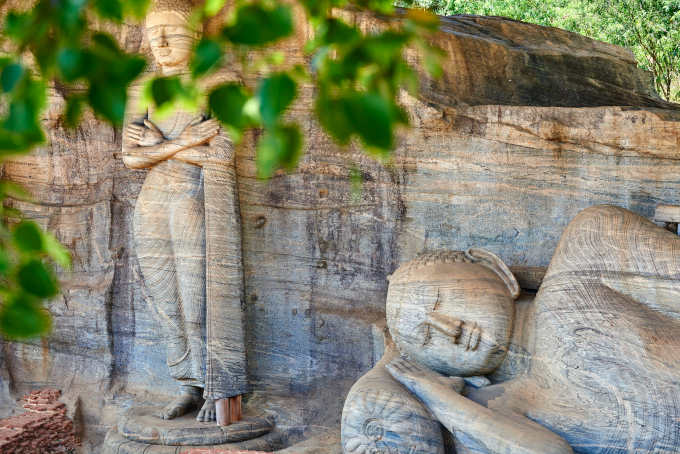
Polonnaruwa served as the second capital of Sri Lanka after Anuradhapura was destroyed in 993. The site contains not only the Brahmanic monuments constructed by the Cholas but also the impressive remains of the magnificent garden-city constructed by Parakramabahu I during the 12th century.
Things to do in Polonnaruwa
- Archaeological Museum
- Ancient site including ancient monuments such as Gal Viharaya / KiriVihara / Kumara Pokuna / Vatadage
- Visit Parakrama Samudraya (Sea) a masterpiece of ancient hydraulic management
- Money conservation center
- Enjoy a typical Sri Lankan local Lunch
- Cycle ride through ancient sites
Ancient City of Sigiriya
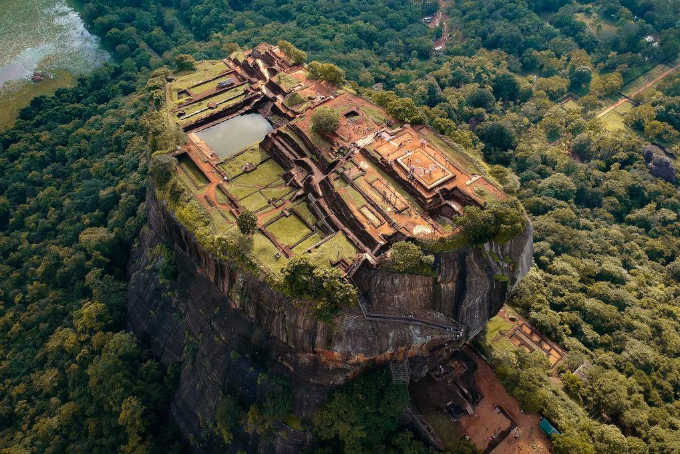
The ruins of Sigiriya include a palace at the top, on the flat peak of the mountain; a terrace in the middle, with the Lion Gate and the mirror wall decorated with murals; and lower palaces, which cling to the slopes beneath the rocks. On the steep slopes and the summit of a granite mountain that soars 180 meters above ground level, you’ll find the ruins of the capital city built by King Kassapa I (477-95). From the base of the rock, the moats, fortifications, and gardens of the palace extended for hundreds of meters.
This mountain, widely recognized as “Lion’s Rock,” dominates the surrounding vegetation. The structure was both a palace and a fort. The cisterns in the higher palace atop the cliff are works of art. From the mouth of a massive brick and plaster lion, a series of galleries and staircases lead to the site.
Sacred City of Anuradhapura
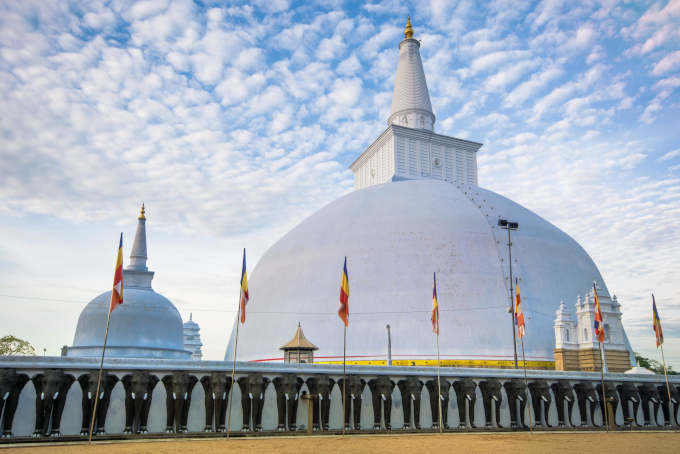
Anuradhapura is renowned for its status as the former capital of Sri Lanka, as well as for the remarkably well-preserved ruins of the Sinhala civilization. Consequently, the location holds significant historical importance. Anuradhapura boasts ancient stupas and reservoirs that are a source of pride.
These stupas, also known as dagobas, are towering buildings with impressive domes. They are a testament to the ancient civil engineering marvels of Sri Lanka, which took into account various factors such as lightning strikes in the construction of high-rise buildings.
Additionally, Anuradhapura offers other attractions such as exquisite rock carvings, majestic stone pillars that remain amidst the ruins of royal palaces, Buddhist monasteries and temples, and magnificent swimming pools that were cut from stone using advanced hydrology engineering techniques.
Old Town of Galle and its Fortifications
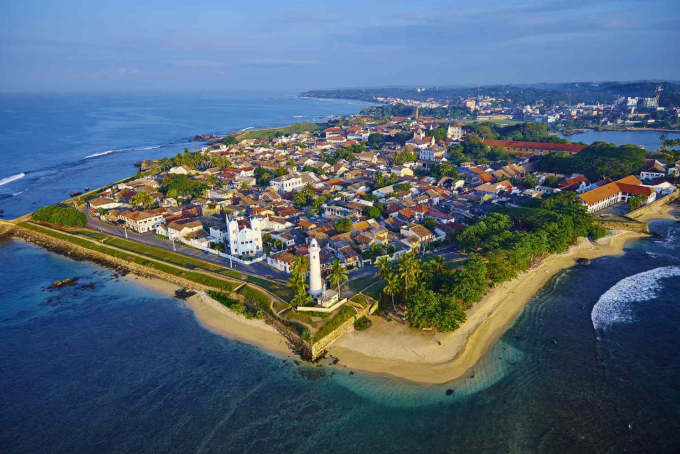
Galle, founded by the Portuguese in the 16th century, flourished until the arrival of the British in the 18th. The interplay of European architectural forms with South Asian customs is on full display in this fortified city, the best example of its kind in South and South-East Asia.
Galle’s historic district is packed with breathtaking sites to see, and the city’s architecture and era’s past glory will leave you in awe. Three of the most popular tourist attractions in the area are the Dutch Church Antiquities of Galle, Unawatuna Bay, and the Galle Lighthouse.
Rangiri Dambulla Cave Temple
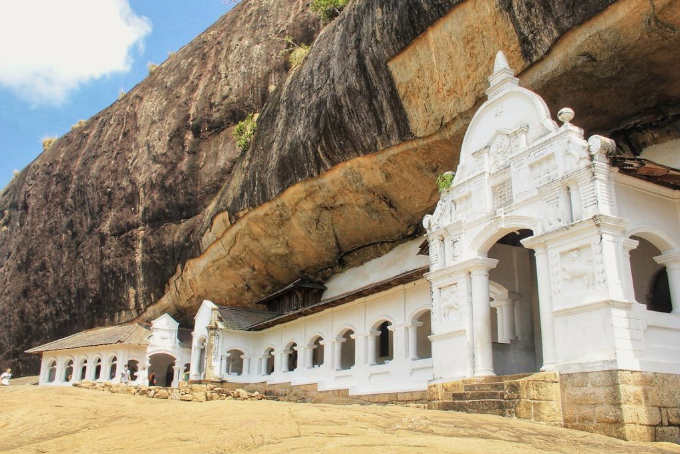
This cave monastery is the largest and best-preserved cave-temple complex in Sri Lanka, and has been a hallowed pilgrimage site for almost two thousand years. The 157 statues and the 2,100 square meters of Buddhist mural murals are the most notable features.
Dambulla is Sri Lanka’s most important and well-preserved cave temple complex. The rock is 160 m high and dominates the flat landscape below it. There are around 80 known caves in the immediate region. There are five main caves, each containing artwork like statues or paintings, that visitors should check out. These depictions of Gautama Buddha and events from his life. There are three statues of Sri Lankan monarchs and four statues of gods and goddesses, for a grand total of 153 statues.
Sacred City of Kandy
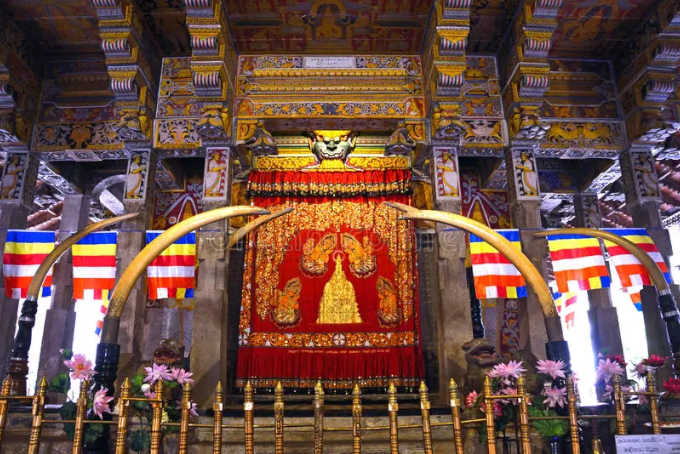
Centrally placed on the island, Kandy was the last of Sri Lanka’s royal kingdoms. Its lovely scenery is surrounded by stunning mountains. Kandy The Royal Botanic Gardens in Sri Lanka are home to more than 4,000 identified plant species, and the nearby Sacred Tooth relic Temple is the holiest site in all of Buddhism.
Until the British takeover of Sri Lanka in 1815, the Dinahala culture flourished for more than 2,500 years in what is now known as the city of Senkadagalapura, a sacred Buddhist shrine. It is also home to the world-famous Temple of the Tooth Relic, where the Buddha’s precious tooth is kept.
Kandy Esala Perehera, held annually by the Temple of the Sacred Tooth, is responsible for the city’s swarming population in the month of August. It is a popular destination for both domestic and international travelers who appreciate Buddhist culture and history. This night parade has more than 50 elephants along with colorful Kandyan dancers and drummers.
